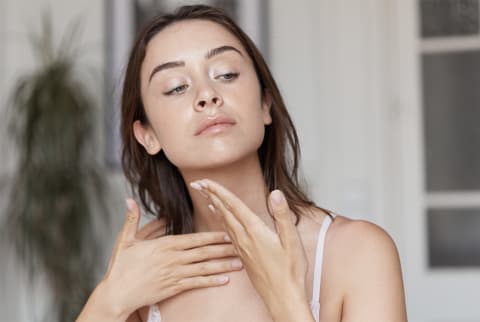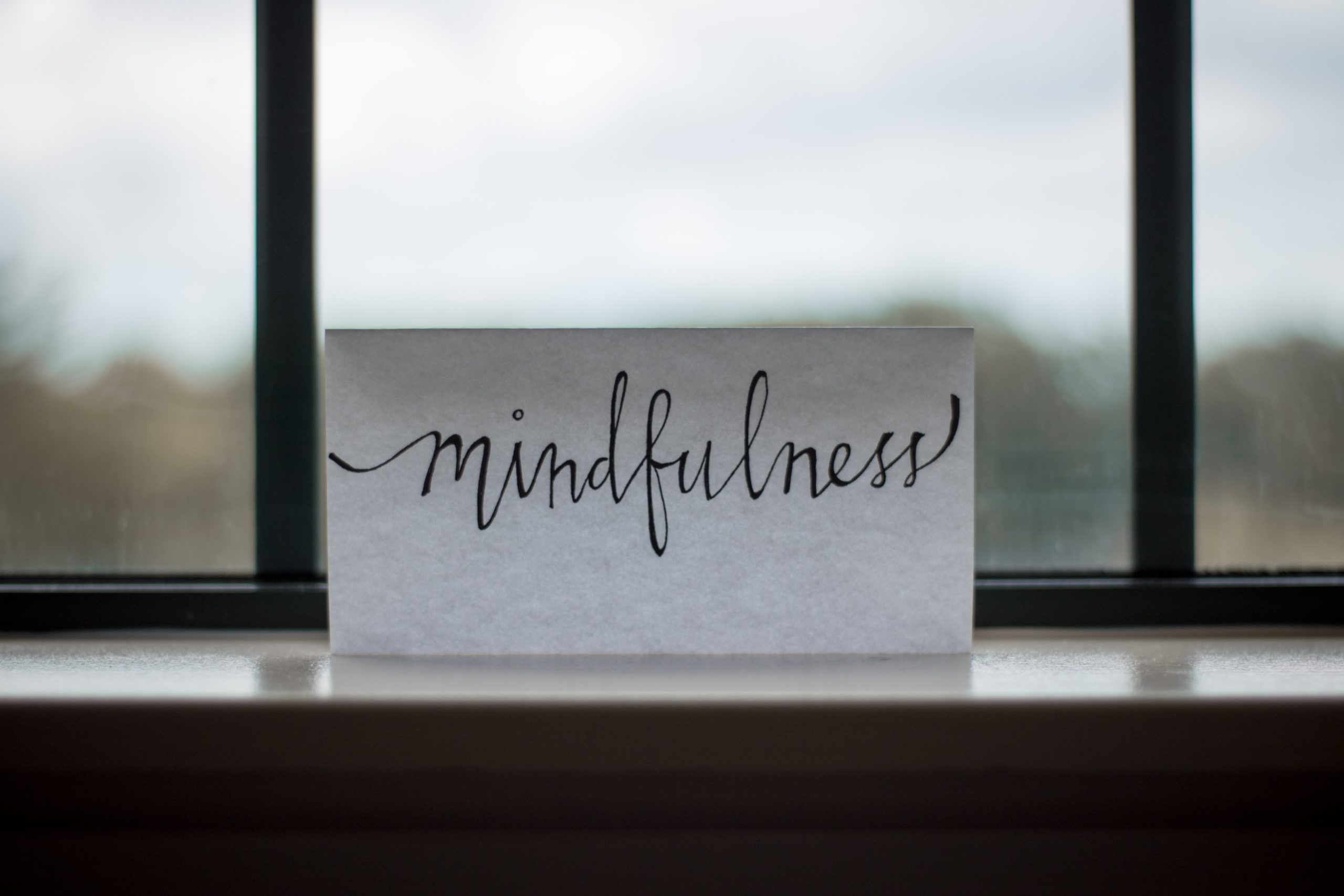Struggling With Facial Redness? Here's What Derms Want You To Know
Skin redness is one of the most frustrating concerns to deal with.


mbg Assistant Beauty Editor
mbg Assistant Beauty Editor
Hannah Frye is the Assistant Beauty Editor at mindbodygreen. She has a B.S. in journalism and a minor in women’s, gender, and queer studies from California Polytechnic State University, San Luis Obispo. Hannah has written across lifestyle sections including health, wellness, sustainability, personal development, and more.
Image by ohlamour studio / Stocksy April 23, 2023 Our editors have independently chosen the products listed on this page. If you purchase something mentioned in this article, we may Skin redness is one of the most frustrating concerns to deal with. Not only does it get easily triggered by certain ingredients and treatments, but the root cause of redness isn’t often clear. We know explaining the causes and best treatments for redness is a big feat, but we’re stepping up to the plate. Below, an in-depth guide for easing skin redness from board-certified dermatologists. 
Advertisement
This ad is displayed using third party content and we do not control its accessibility features.
Facial redness causes
As mentioned above, facial redness can be caused by a plethora of factors. Oftentimes, it’s more than one. Below, a brief overview of the most common causes.

Image by iStock / Alona Siniehina
Advertisement
This ad is displayed using third party content and we do not control its accessibility features.
How to get rid of redness on face at home
If you can pinpoint exactly what’s causing your facial redness (or visit a dermatologist for help) that’s the best first step. Either way, adding soothing topical products and healthy lifestyle practices will help to ease the flushing. Below, a few trusted methods.
1.
Colloidal oatmeal and oat extracts
“Colloidal oatmeal has been used for a variety of skin conditions in the past,” says Xu. "It has been shown to have antioxidant, anti-inflammatory, and antimicrobial properties, but its most effective use is reducing itching and repairing the skin barrier.”
He adds, “those that have dealt with eczema, for example, have found relief from products that use colloidal oatmeal.” However, the healing properties of colloidal oatmeal and oat extract can help anyone ease redness and irritation. Plus, it’s safe for sensitive skin types.
However, Lamb notes that colloidal oatmeal isn’t the best ingredient for those with celiac disease as it can cause an allergic reaction.
Advertisement
This ad is displayed using third party content and we do not control its accessibility features.
“If your redness is being caused by an inflammatory skin condition like acne, using targeted treatment to get your acne under control will help to fight redness,” says board certified dermatologist, Chief Medical Officer and Co-Founder of Fig.1, Courtney Rubin, M.D., FAAD.
Acne is a highly complex skin condition with many compounding factors including genetics, skin type, hormone levels, and more. Classic acne-easing ingredients like salicylic acid and retinol will be helpful for many, but each person is different.
If you’re looking to clear up breakouts, start here with our full guide to the many different types of acne. For those who have yet to find a successful treatment or those with cystic acne, visit a dermatologist for a customized treatment plan.
3.
Take a break from exfoliating
“A break from exfoliation can also help heal irritated skin,” says Xu. This applies to both physical and chemical exfoliants. Set down the scrubs and AHA or BHA treatments for a few days to allow your skin to heal before continuing your normal regimen.
Over-exfoliation can be caused by using a treatment that’s too strong for your skin type, or using an exfoliant too often. Most people don’t need to be exfoliating daily, so try to space out this step to a few times a week at most.
During your break from exfoliants, spoil your skin with hydrating serums and moisturizers—more on that next.
Advertisement
This ad is displayed using third party content and we do not control its accessibility features.
“Implement a gentle, skin barrier supportive skincare routine,” Rubin says. This may include a gentle cleanser (read: no scrubs or enzyme cleansers for now), a hydrating serum, a nourishing moisturizer, and even a face oil to seal in the hydration.
Rubin's pick: Fig. 1 Ceramide Moisturizer because it's loaded with ceramides, hyaluronic acid, squalene, and peptides to support the skin barrier and prevent moisture loss.
When shopping for products, keep an eye out for the following ingredients:
Skin care products for facial redness
If your skin is red and inflamed, there’s a high chance your skin barrier is damaged. This could be from overexfoliation, sun exposure, dryness, acne, eczema, and the list goes on. When your skin is in this state, it’s more sensitive to fragrances—thus, why you should avoid them during your healing period.
Keep an eye out for “fragrance-free” labels on your products. If you’re nervous to try something new, consider patch testing it on part of your face before going in for a full application.
Advertisement
This ad is displayed using third party content and we do not control its accessibility features.
6.
Support healthy hormones
Hormone imbalance often shows up as facial breakouts and redness. To balance your hormones at home, prioritize high-quality sleep, consume natural, nutrient-dense foods, exercise, and work on lowering stress levels when you can.
Lamb recommends the Veracity skin care products and supplements as well if you want to be even more proactive about hormone balance.
When to see a dermatologist
Not sure if you should see a derm? Take these cautions as a warning sign you should book an appointment:
In-office treatment options
Once you visit a pro, there’s plenty of ways they can help. Apart from helping you build a customized routine, they have plenty of medical-grade treatments available. A few below:
Facial redness prevention tips
Once the redness subsides, long-term management is all about prevention. The key is to avoid ingredients and habits that trigger your flare-ups and support your skin barrier. Here’s a few ways to do so:
Everyone should wear SPF daily, especially if your skin is sensitive to flushing. Even if you don’t frequently get sunburned, the UV rays can still heat up your skin and cause a visible reaction.
For those that use retinol and exfoliants, the risk for sunburn and sun damage are even higher. In short, make SPF a daily ritual and bring it in your bag to reapply if you’re spending the day outside.
Xu's pick: Geologie Tone Control Face Cream with SPF15, a formula specifically designed to ease redness and rosacea.
2.
Avoid aggressive topicals you can't tolerate
You may consider keeping a running list of ingredients that your skin doesn’t tolerate. This way you can shop skin care with intention and caution. Below, a few ingredients that commonly cause irritation for those with sensitive skin:
Many people experience flushing from inflammatory foods like those with spice or alcohol. If you think this might be the case, try to limit your consumption of these trigger foods and be mindful of when you eat them, knowing your skin may flush afterward.
If your skin also gets itchy or visibly inflamed after consuming a certain food, you may have an allergy to it. Do your best to limit intake of this food and see a medical professional if you’re not sure which ingredient is causing your skin to flush.
4.
Find stress management practices
As mentioned above, stress can also trigger redness in the face. While you can’t eliminate stress with the snap of a finger, you can add stress management practices to your daily routine. A few common ones include meditation, exercise, breathwork, and journaling.
5.
Strengthen your skin barrier
If your skin barrier is in good shape, there’s a higher chance it can defend against irritants. Ensure you tend to the barrier by limiting use of exfoliants and retinol, always using moisturizer and SPF, and add booster products like hydrating serums and oils to your routine.
For those struggling to find a healthy cadence with exfoliants and retinol, you may want to consider opting for the skin cycling method. This practice, coined by board-certified dermatologist Whitney Bowe, M.D. may help you keep a healthy and barrier-supporting routine.
The basic skin cycling plan calls for one night of exfoliation, followed by a night of retinol, and then two nights of recovery (AKA only hydrating products) to repair the barrier. This exact method isn’t fit for everyone, but it is a good launching point. Here’s our full skin cycling guide if you’re interested in learning more.
FAQ
How do I get rid of redness on my face?
There are plenty of ways to ease redness on the face, but the best remedy depends on what’s causing it in the first place. To start, take a break from exfoliants and retinol products if you use them. Ensure your skin care routine is focused on hydration and barrier support, and it’s free from fragrances if you’re sensitive to them. If the redness doesn’t subside in two to four weeks, visit a dermatologist for assistance.
Why are my cheeks red but not rosacea?
Redness on the cheeks can be caused by hormone imbalance, dermatitis, acne, a damaged skin barrier, sun exposure, stress, inflammatory foods, irritating skin care products, or skin dryness.
What causes redness on face?
Facial redness can be caused by sunburn, overexfoliation, irritating skin care products, allergic reactions, dermatitis, inflammatory foods, and stress.
The takeaway
Redness on the face can be caused by a number of triggers from overexfoliation to allergic reactions and more. To ease redness from home, take a break from exfoliation, add hydrating and fragrance-free products to your topical routine, and visit a dermatologist if at-home remedies don’t work for you within a month. Want to learn more about the skin barrier and why it’s so important? Here’s a breakdown.

 Koichiko
Koichiko 
































